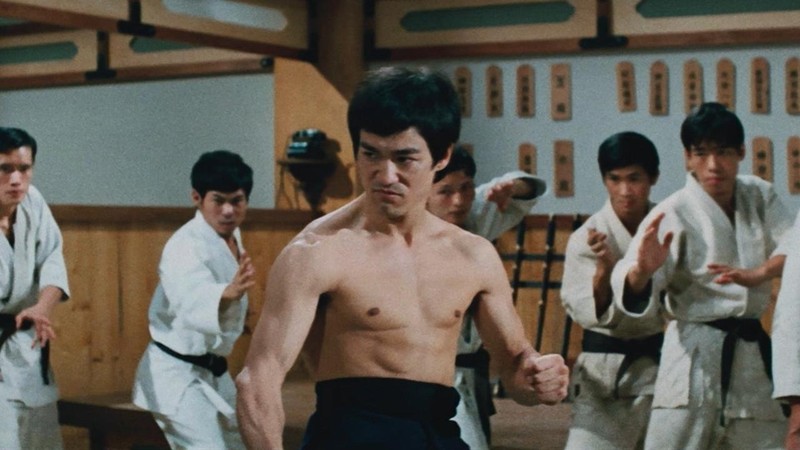I'm making my way backwards on Bruce Lee's movies. "Fist of Fury" is the penultimate, before I can find and watch "The Big Boss". (Yes, I've re-watched "Way of the Dragon", but there's not much to write about.)
In some ways this movie reminds me of "Vengeance!" (1970), written by Ni Kuang and Chang Cheh, directed by Chang Cheh, and starred David Chiang. In that movie, the actual event that triggers the title is shown briefly in the beginning of the movie, with the rest of the runtime devoted to a lengthy journey of David Chiang taking out his targets one by one, ending in a final massive brawl.
Although "Vengeance" was produced by Shaw Brothers while "Fist of Fury" by Golden Harvest, the latter initially contracted with Ni Kuang again to write the script. Apparently that version was abandoned, and the current script was written by Lo Wei, who also directed the movie and played Inspector Lo, a not-insubstantial role. I have no idea whether Lo was influenced by Chang's movie or not, but it does seem to take the concept one step further, in that we do not see the occurrence of the death, for which revenge must be taken, in any of the scenes. The opening scene was Lee's Chen Jen, Sifu Hok's student, coming home after being abroad for an unknown period and finding Sifu dead. In a sense this is a typical mystery: first there is a corpse, then the main character detects and uncovers the truth, and finally he punishes the murderer(s).
When he is not involved in one-on-one or one-on-many fight scenes, Lee's character vacillates between two seemingly incongruent personalities: In some scenes, he acts like a beast, filled with primal rage, mumbling a few words (more like grunts), and beating someone to death with his bare hands. In other scenes, he meticulously plans and carries out his revenge with elaborate disguises and tricks, including cutting the enemy organization's telephone wire and infiltrating it by pretending to be a repairman. He was more cunning and resourceful than James Bond.
There were also a couple of awkward love scenes with the adorable Nora Miao, showing a definite lack of chemistry between Lee and Miao. Nevertheless, Lee walks around throughout the movie with, well, fury, on a spectrum from barely suppressed to full blown madness.
I have to admit that in his four complete movies, Bruce Lee played an interesting range of characters. The rage in Fist of Fury is perhaps most suited to his style of fighting, in other words, the instant lethality. Again I felt a tingle of terror in these fight scenes, and I worry about the safety of the stuntmen and costars*. His eyes bulge, his face contorts, his muscles flex, and his throat releases the hallmark screams that sound barely human. Then bodies start flying in the air all around him. Here he seems to embody a raw, animalistic aggression unmatched in the other movies. There is intensity, and then there is the Bruce Lee level of intensity.
The sketchiness of the script and the awkwardness of the non-fight scenes feel all the more bizarre when mixed with a nihilistic undertone. Death seems inevitable, not unlike "Vengeance". According to movie lore, Lo Wei wanted to have a happy ending, sort of, in which Chen lives, but Lee insisted that he must die. The ending is an obvious homage (or plagiarism, depending on your point of view) to "Butch Cassidy and the Sundance Kid", which had come out only 3 years before.
----
*One of his opponents in the movie, Robert Baker, was a student at Lee's martial arts school in California. Among the stuntmen that got beaten up were Jackie Chan, Yuen Wah, Yuen Kwai (Corey Yuen), and Lam Ching-Ying, when they were not doubling for Lee's more acrobatic moves.



No comments:
Post a Comment